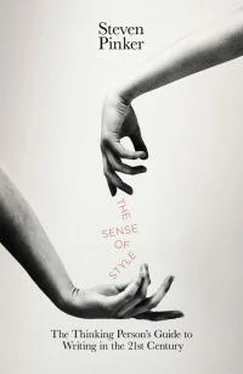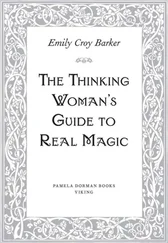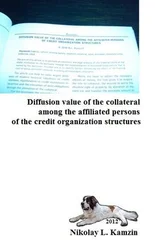This vignette shows that even belonging to the same professional club as a writer is no protection against her curse of knowledge. I suffer the daily experience of being baffled by articles in my field, my subfield, even my sub-sub-subfield. Take this sentence from an article I just read by two eminent cognitive neuroscientists, which appeared in a journal that publishes brief review articles for a wide readership:
The slow and integrative nature of conscious perception is confirmed behaviorally by observations such as the “rabbit illusion” and its variants, where the way in which a stimulus is ultimately perceived is influenced by poststimulus events arising several hundreds of milliseconds after the original stimulus.
After I macheted my way through the overgrowth of passives, zombies, and redundancies, I determined that the content of the sentence resided in the term “rabbit illusion,” the phenomenon which is supposed to demonstrate “the integrative nature of conscious perception.” The authors write as if everyone knows what the “rabbit illusion” is, but I’ve been in this business for nearly forty years and had never heard of it. Nor does their explanation enlighten. How are we supposed to visualize “a stimulus,” “poststimulus events,” and “the way in which a stimulus is ultimately perceived”? And what does any of this have to do with rabbits? Richard Feynman once wrote, “If you ever hear yourself saying, ‘I think I understand this,’ that means you don’t.” Though the article had been written for the likes of me, the best I could say after reading this explanation was, “I think I understand this.”
So I did a bit of digging and uncovered a Cutaneous Rabbit Illusion, in which if you close your eyes and someone taps you a few times on the wrist, then on the elbow, and then on the shoulder, it feels like a string of taps running up the length of your arm, like a hopping rabbit. OK, now I get it—a person’s conscious experience of where the early taps fell depends on the location of the later taps. But why didn’t the authors just say that, which would have taken no more words than “ stimulus this” and “ poststimulus that”?
The curse of knowledge is insidious, because it conceals not only the contents of our thoughts from us but their very form. When we know something well, we don’t realize how abstractly we think about it. And we forget that other people, who have lived their own lives, have not gone through our idiosyncratic histories of abstractification.
There are two ways in which thoughts can lose their moorings in the land of the concrete. One is called chunking. Human working memory can hold only a few items at a time. Psychologists used to think that its capacity was around seven items (plus or minus two), but later downsized even that estimate, and today believe it is closer to three or four. Fortunately, the rest of the brain is equipped with a workaround for the bottleneck. It can package ideas into bigger and bigger units, which the psychologist George Miller dubbed “chunks.” 22(Miller was one of the greatest stylists in the history of the behavioral sciences, and it’s no coincidence that he co-opted this homey term rather than inventing some technical jargon.) 23Each chunk, no matter how much information is packed inside it, occupies a single slot in working memory. Thus we can hold in mind just a few of the letters from an arbitrary sequence like M D P H D R S V P C E O I H O P. But if they belong to well-learned chunks such as abbreviations or words, like the ones that pop out when we group the letters as MD PHD RSVP CEO IHOP, five chunks, we can remember all sixteen. Our capacity can be multiplied yet again when we package the chunks into still bigger chunks, such as the story “The MD and the PhD RSVP’d to the CEO of IHOP,” which can occupy just one slot, with three or four left over for other stories. Of course this magic depends on one’s personal history of learning. To someone who has never heard of the International House of Pancakes, IHOP takes up four slots in memory, not one. Mnemonists, the performers who amaze us by regurgitating superhuman amounts of information, have spent a lot of time building up a huge inventory of chunks in their long-term memories.
Chunking is not just a trick for improving memory; it’s the lifeblood of higher intelligence. As children we see one person hand a cookie to another, and we remember it as an act of giving. One person gives another one a cookie in exchange for a banana; we chunk the two acts of giving together and think of the sequence as trading. Person 1 trades a banana to Person 2 for a piece of shiny metal, because he knows he can trade it to Person 3 for a cookie; we think of it as selling. Lots of people buying and selling make up a market. Activity aggregated over many markets gets chunked into the economy. The economy now can be thought of as an entity which responds to actions by central banks; we call that monetary policy. One kind of monetary policy, which involves the central bank buying private assets, is chunked as quantitative easing. And so on.
As we read and learn, we master a vast number of these abstractions, and each becomes a mental unit which we can bring to mind in an instant and share with others by uttering its name. An adult mind that is brimming with chunks is a powerful engine of reason, but it comes with a cost: a failure to communicate with other minds that have not mastered the same chunks. Many educated adults would be left out of a discussion that criticized the president for not engaging in more “quantitative easing,” though they would understand the process if it were spelled out. A high school student might be left out if you spoke about “monetary policy,” and a schoolchild might not even follow a conversation about “the economy.”
The amount of abstraction that a writer can get away with depends on the expertise of her readership. But divining the chunks that have been mastered by a typical reader requires a gift of clairvoyance with which few of us are blessed. When we are apprentices in our chosen specialty, we join a clique in which, it seems to us, everyone else seems to know so much! And they talk among themselves as if their knowledge were second nature to every educated person. As we settle in to the clique, it becomes our universe. We fail to appreciate that it is a tiny bubble in a vast multiverse of other cliques. When we make first contact with the aliens in other universes and jabber at them in our local code, they cannot understand us without a sci-fi Universal Translator.
Even when we have an inkling that we are speaking in a specialized lingo, we may be reluctant to slip back into plain speech. It could betray to our peers the awful truth that we are still greenhorns, tenderfoots, newbies. And if our readers do know the lingo, we might be insulting their intelligence by spelling it out. We would rather run the risk of confusing them while at least appearing to be sophisticated than take a chance at belaboring the obvious while striking them as naïve or condescending.
It’s true that every writer must calibrate the degree of specialization in her language against her best guess of the audience’s familiarity with the topic. But in general it’s wiser to assume too little than too much. Every audience is spread out along a bell curve of sophistication, and inevitably we’ll bore a few at the top while baffling a few at the bottom; the only question is how many there will be of each. The curse of knowledge means that we’re more likely to overestimate the average reader’s familiarity with our little world than to underestimate it. And in any case one should not confuse clarity with condescension. Brian Greene’s explanation of the multiverse in chapter 2 shows how a classic stylist can explain an esoteric idea in plain language without patronizing his audience. The key is to assume that your readers are as intelligent and sophisticated as you are, but that they happen not to know something you know.
Читать дальше












